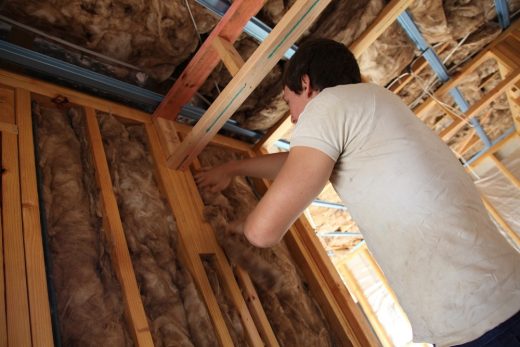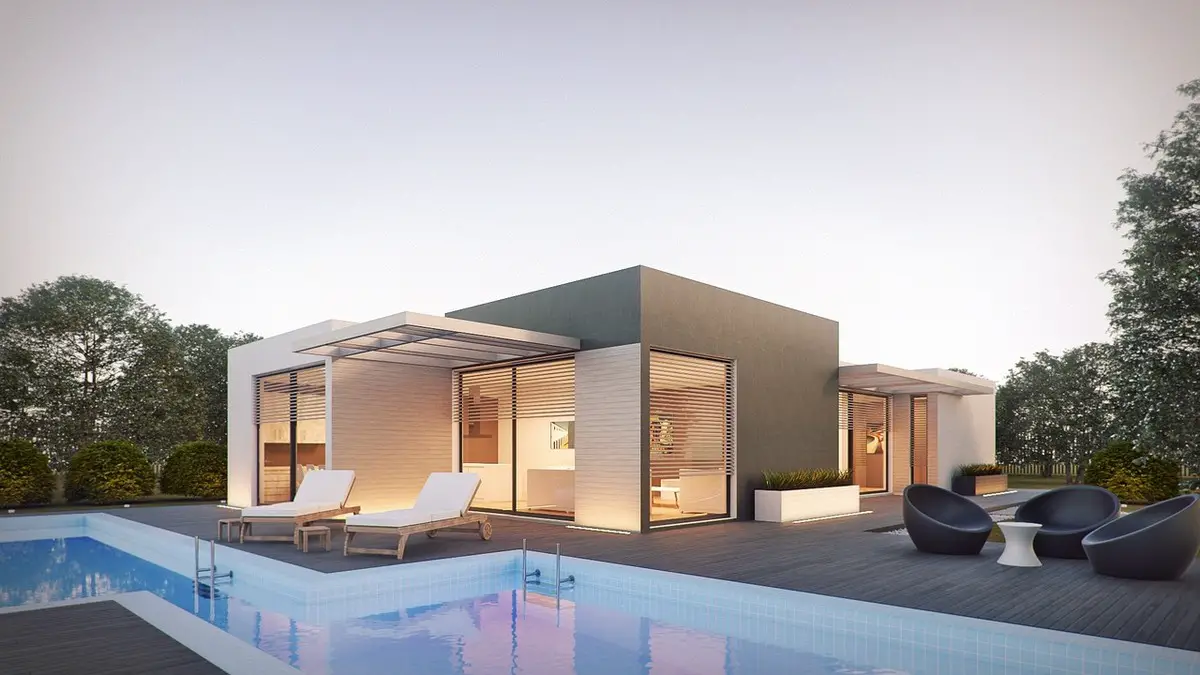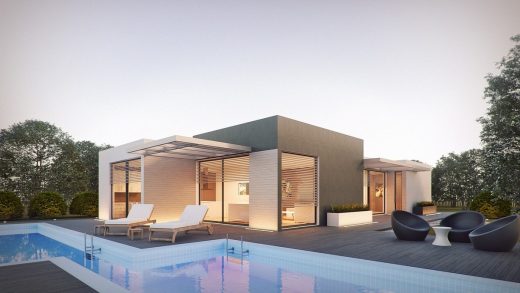Reflective insulation aesthetic and efficiency, Building material reflects heat, Protection install
Reflective Insulation Aesthetic & Efficiency Perks
23 August 2024
Boosting Modern Architecture: The Aesthetic & Efficiency Perks of Reflective Insulation
Ever marveled at the sleek, reflective surfaces of modern buildings that not only draw the eye but also seem to blend seamlessly with the sky? That’s the magic of reflective insulation at work. It’s not just about aesthetics though. This material is revolutionizing the architectural world, making structures more energy efficient and comfortable.
But how does it achieve this? And what makes it a favorite among today’s architects and designers? I’ll delve into these questions, shedding light on the role of reflective insulation in enhancing modern architectural aesthetics. Get ready to explore the intersection of beauty and functionality in contemporary design.
Understanding Reflective Insulation
To dig deeper into the impact of modern reflective insulation on today’s architecture, a peek into its scientific background and salient features is of essence.
The Science Behind Reflective Insulation
Reflective insulation, as the name suggests, reflects heat instead of absorbing it, making a substantial difference in a building’s inner comfort and energy bills. It works by reducing the flow of radiant heat, the primary source of heat transfer. The shiny aluminum foil used on the insulation material surfaces is responsible for this reflection phenomenon. It reflects up to 97% of radiant heat, throwing it back into the air or the source, effectively keeping the interior conditions stable, irrespective of exterior temperature fluctuations.
Key Features of Reflective Insulation
Modern reflective insulation comes with a plethora of features. Its light weight makes it an easy installation choice for architects and builders. Its thinness, despite high efficiency, presents opportunities for constructing sleek, space-conscience designs. Another core feature is durability. It resists moisture, does not deteriorate over time, nor loses its reflective properties. The fantastic part is, during summer, it keeps buildings cool by reflecting away heat, and in winters, it retains warmth by reflecting interior heat back into the building. This dual action plays a vital role in enhancing the energy efficiency of a building while preserving its aesthetic appeal.
Role of Reflective Insulation in Modern Architecture
Reflective insulation plays a pivotal role in modern architecture. Let’s explore how it enhances building aesthetics and boosts energy efficiency.
Enhancing Building Aesthetics
In the realm of modern architecture, buildings aren’t merely functional entities, but works of art. Reflective insulation, with its sleek profile and high versatility, adds a unique aesthetic value to these structures. The slim profile of modern reflective insulation doesn’t compromise the elegant, streamlined designs preferred in contemporary architecture.
Moreover, the radiant surfaces of reflective insulation impart an appealing futuristic vibe to architectural structures. On a larger scale, cityscapes adorned with reflective insulation clad edifices glisten in the daylight and sparkle in the night, making them visually stunning spectacles. Thus, reflective insulation seamlessly harmonizes functionality with aesthetics in the architectural world.
Impact on Building Efficiency
Beyond aesthetics, I find that reflective insulation significantly boosts a building’s energy efficiency. When installed correctly, modern reflective insulation acts as a barrier—reflecting heat during summer and trapping warmth during winter. It’s not rocket science, just simple physics at work — reflecting heat instead of absorbing it.
This dual-function reduces the amount of energy required to cool or heat a building, subsequently reducing the eco-footprint of the structure. Additionally, it contributes directly to financial savings as it results in less reliance on air conditioning systems and heaters, thereby reducing energy bills. Consequently, reflective insulation is a smart choice for environmentally-conscious, efficient modern architecture.
Reflective Insulation and Architectural Design
In an era of rapidly evolving architectural aesthetics, integration of modern reflective insulation undeniably influences building designs. Let’s delve into its profound impact, particularly in façade design and retrofit solutions.
Integration in Façade Design
Buildings’ façades, the primary interface with the environment, experience a significant advantage from reflective insulation. They not only create a striking visual impression but also play a crucial role in influencing buildings’ energy efficiency. Reflective insulation, with its lustrous facade, enriches aesthetic attributes, delivering a sleek, contemporary look that catches the eye. However, it isn’t just about the visuals. The radiant quality of this material vastly enhances thermal performance, acting as a barrier and reflecting heat outward, a particularly beneficial trait for structures facing direct sunlight. It remarkably lowers energy consumption, reducing HVAC system dependency and minimizing energy footprint.
Customized Retrofit Insulation Solutions
Construction challenges that architects face are never one-size-fits-all, and neither are the solutions. Retrofitting, the process of adding new technologies or features to existing systems, often proves to be the best way towards improving a building’s energy performance. Customized retrofit insulation solutions bring myriads of possibilities, with reflective insulation being a popular choice. Pliability of reflective insulation lets it conform to various structural spaces, regardless of shape or size, allowing even the most complex architectural forms to take advantage of its superior thermal properties. Reduced energy usage, minimized heat-transfer and enhanced interior comfort have paralleled these retrofit solutions, ultimately leading to diminished environmental impact and cost savings.
Material and Technologies Enhancing Reflective Insulation
As we delve deeper, let’s explore the materials and technologies that further bolster the potential of modern reflective insulation in architecture.
Advances in Insulation Materials
In recent years, advanced materials have emerged to fortify reflective insulation’s efficacy. For instance, aluminum foils and metallized polyester films form heat-reflective layers for superior insulation. They’re often bonded with polyethylene or other material bubbles to create more durable, efficient insulation solutions. The addition of thermosetting resins enhances fire resistance, making insulation safer. Beyond these, multi-layered reflective insulation (with up to 40 layers) is gaining traction. It offers improved heat reflection by multiplying reflection points, thus reducing radiant heat transfer significantly.
Technological Innovations
In the realm of technology, innovations are pushing the envelope for reflective insulation. Infrared Reflective (IRR) coatings, for example, bounce back a large percentage of solar infrared radiation, reducing heat gains. Similarly, Radiant Barrier Systems (RBS) are being implemented to deflect radiant heat, fostering a more comfortable interior environment. Furthermore, numerical modeling and software simulation tools like Heat3 are facilitating precise calculations of heat transfer in building facades, allowing architects to optimize insulation placement for maximized thermal performance. These technologies not only elevate modern architecture’s aesthetic appeal but also promote energy efficiency and a smaller environmental footprint.
Environmental Considerations
Reflective insulation’s contributions extend beyond aesthetics and energy efficiency in architecture. It’s also a crucial player in environmental conservation.
Energy Efficiency and Sustainability
Reflective insulation optimizes energy consumption for heating and cooling in buildings. Its ability to reflect heat back to its source significantly reduces energy demands, contributing to sustainability. By deflecting up to 97% of radiant heat, it notably enhances energy efficiency.
Through regulating temperature extremes, it saves on excessive energy use and reduces greenhouse gas emissions. The Energy Conservation Building Code (ECBC) reports a decrease in energy consumption by 40-60% in structures using reflective insulation—positively impacting the environment.
Reflective Insulation and Natural Elements Integration
Modern reflective insulation isn’t just about energy savings; it harmonizes with natural elements to foster eco-friendly architectural designs. By harnessing natural light and heat, it aids in creating a balance between built and natural environments. For instance, it reflects sunlight in summer, keeping interiors cool and reducing the need for air conditioners. In winter, it traps warmth inside, decreasing the reliance on artificial heating systems. This blend of functional design and environmental synergy makes reflective insulation a vital component in modern architecture.
Case Studies: Reflective Insulation in Practice
Reflective insulation’s role extends beyond theoretical advantages; it’s shaping architectural paradigms in practice. Let’s look at its application in contemporary design projects, and recount the success stories it has scripted.
Examples of Modern Architectural Projects
Taking the lead in the adoption of modern reflective insulation, the “Musée du quai Branly” in Paris represents a star example. With an extensively looming edifice, the building benefits from the careful integration of reflective insulation.
The material’s presence aids in maintaining a comfortable interior temperature, fostering a climate conducive to preserving delicate artworks. Another example is the “Beijing National Aquatics Center,” also known as Water Cube. The Cube’s energy-efficient design incorporates reflective insulation, contributing to the building’s iconic aesthetic appeal, and its title as a green Olympics facility.
Lessons Learned and Success Stories
From an ambitious venture to proven practicality, reflective insulation’s journey in the architecture industry is nothing short of a success story. The “First Solar Factory” in Frankfurt exemplifies this.
Incorporating reflective insulation improved the factory’s energy efficiency by 20%, showcasing the material’s tangible benefits. The “Denver International Airport’s” efficient use of reflective insulation also merits praise. The airport’s roof, curtained with reflective insulation, showcases how a functional inclusion can translate into an aesthetic spectacle, voicing a novel tale of energy efficiency and architectural appeal.
The Future of Reflective Insulation in Architecture
As we move forward into the future of architecture, there are exciting developments paving the way. Particular focus remains on how modern reflective insulation continues to transform the landscape of contemporary architecture.
Trends and Developments
In the evolving sphere of architectural design, reflective insulation emerges as a key player. A trend, notably visible, lies in the integration of reflective insulation materials into sustainable or green buildings.
The reason? It significantly optimizes energy efficiency levels. For instance, the “Sky Gardens” building in London utilizes extensive reflective insulation for optimized light and heat regulation. Another trend includes the usage of hybrid systems. This approach combines reflective insulation with traditional insulation materials offering superior thermal efficiency.
Future Prospects and Investment Opportunities
Reflective insulation’s future in architecture appears promising. Increased adoption is expected as architects progressively appreciate its multifaceted benefits. The market for reflective insulation showcases potential for significant growth.
Investors perceive its value proposition in facilitating energy-efficient, aesthetically pleasing, and cost-effective building solutions. From retrofitting older buildings with reflective insulation for better energy conservation to its use in new modular design structures, investment opportunities abound. The “Solar Pavilion” project in Amsterdam, with its extensive use of reflective insulation, exemplifies how future building projects might leverage this versatile material.
Comments on this guide to Reflective insulation aesthetic and efficiency article are welcome.
Wall Insulation
Wall Insulation
How to Get a Free Insulation Grant
Things to check while selecting commercial insulation
Benefits of External Wall Insulation

Property Design
Sustainable Building Design
:
Sustainable Building News
Comments / photos for the Reflective insulation aesthetic and efficiency page welcome.






